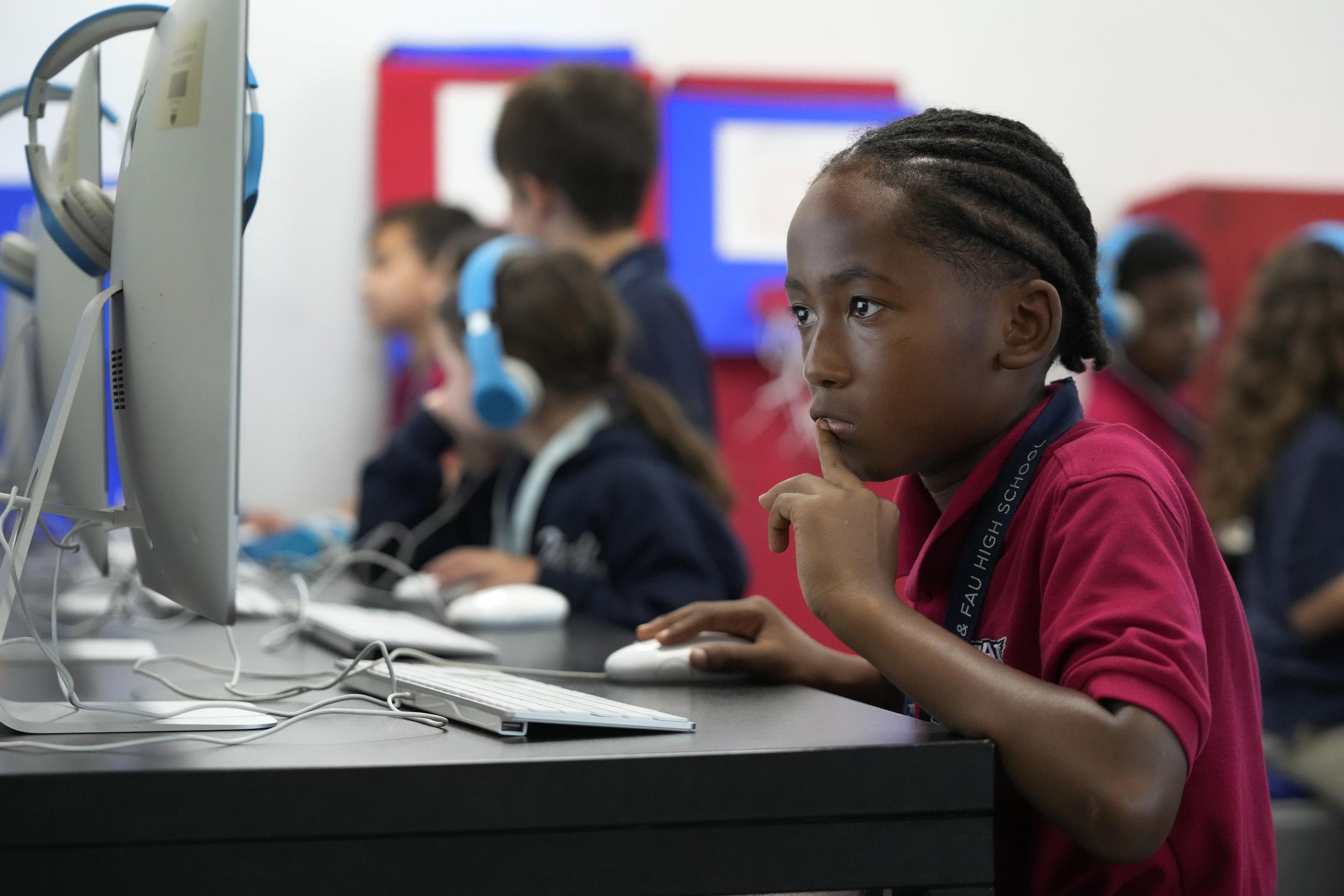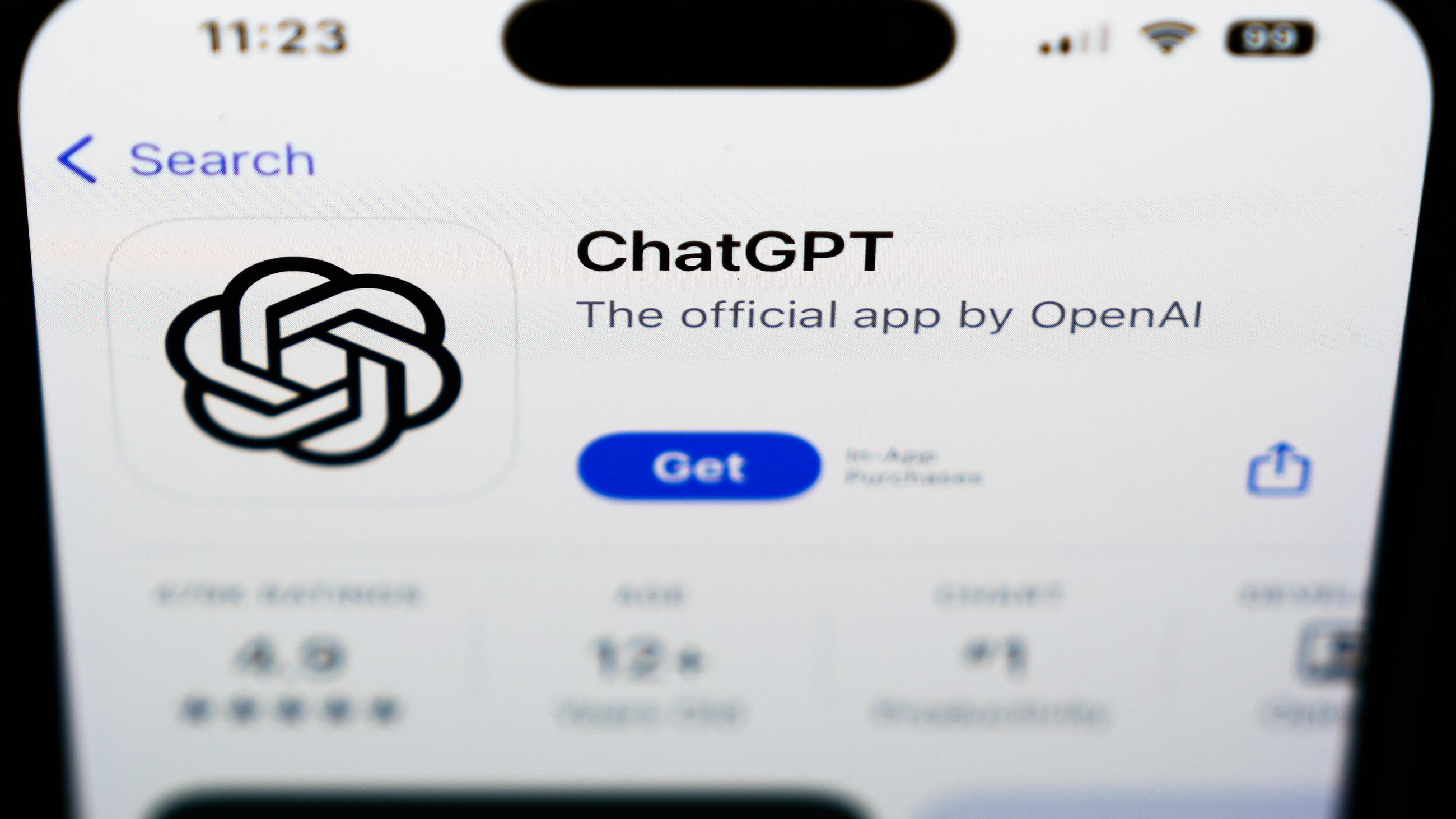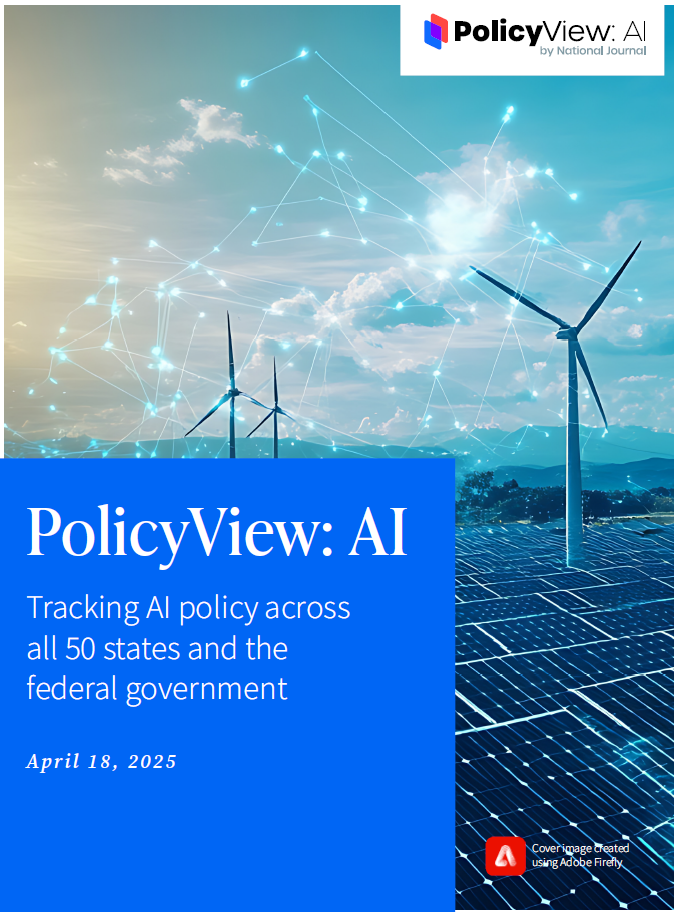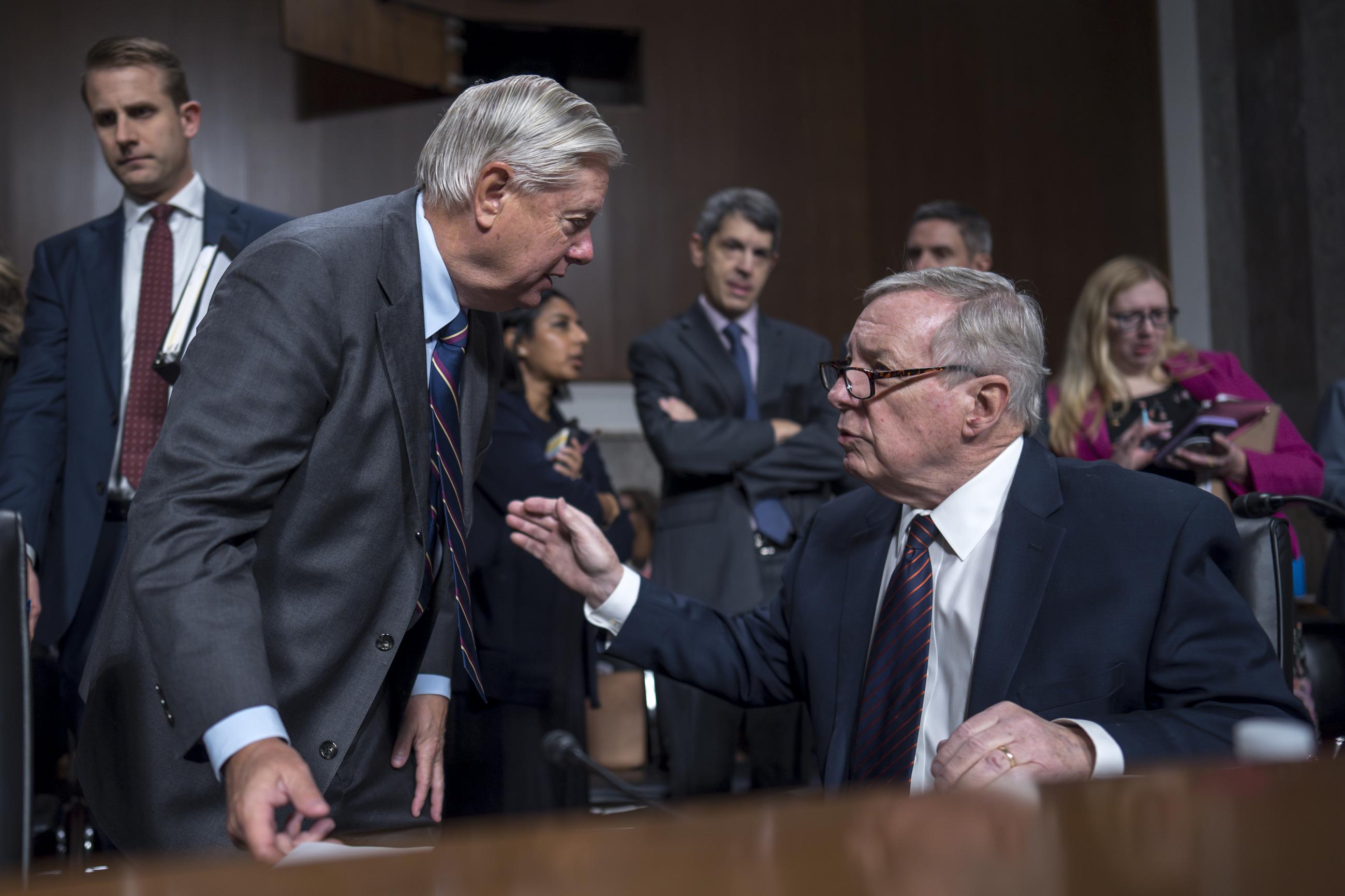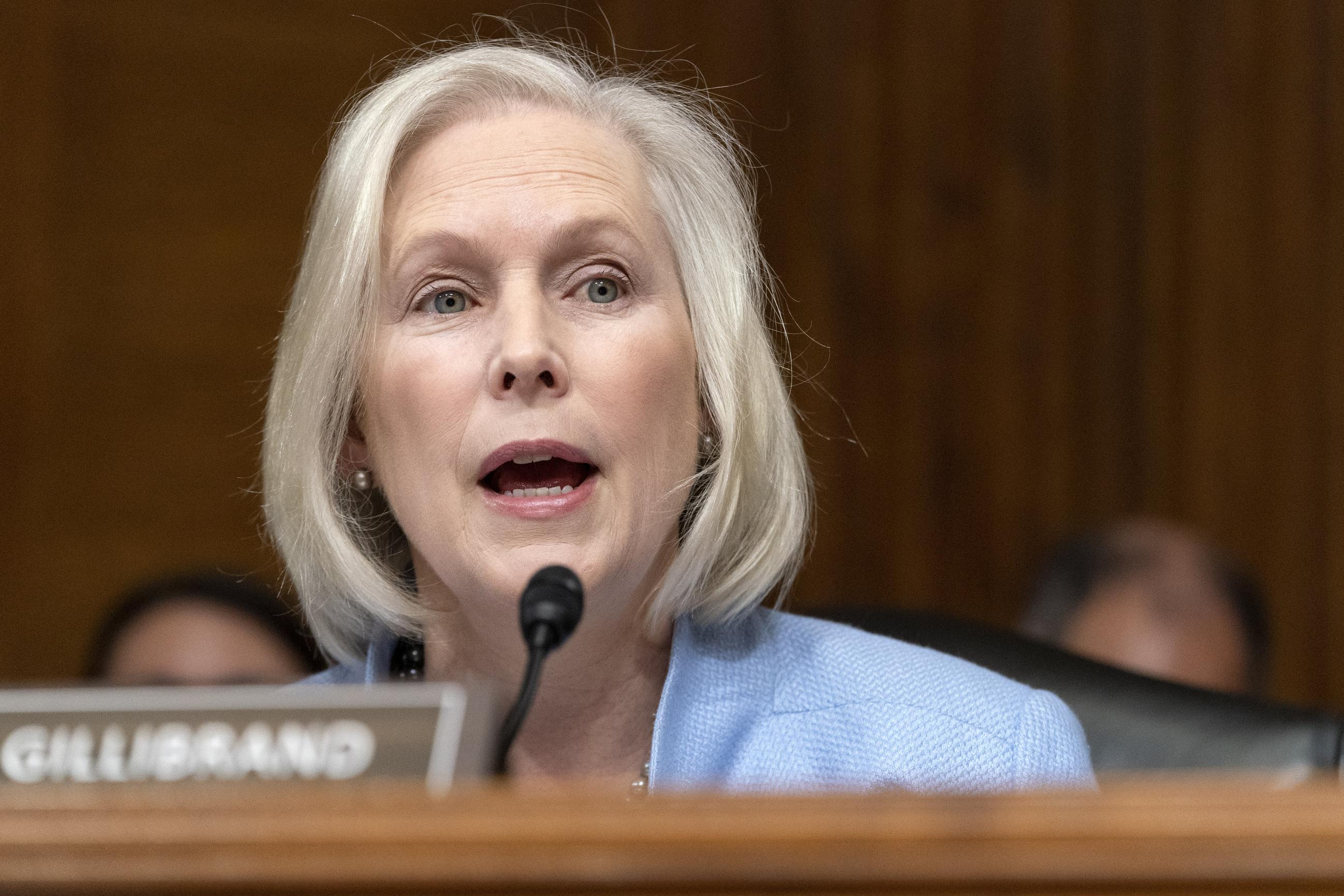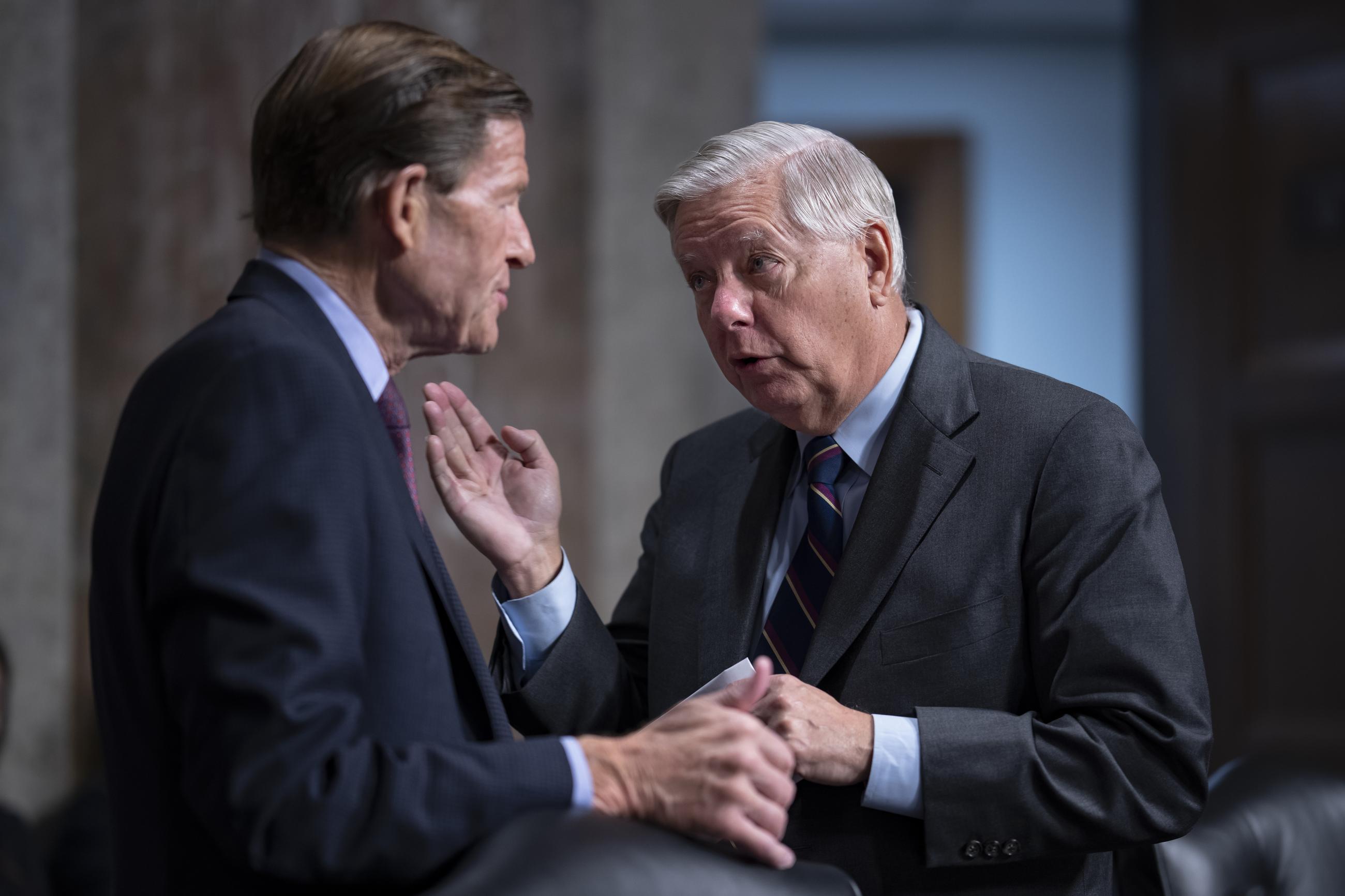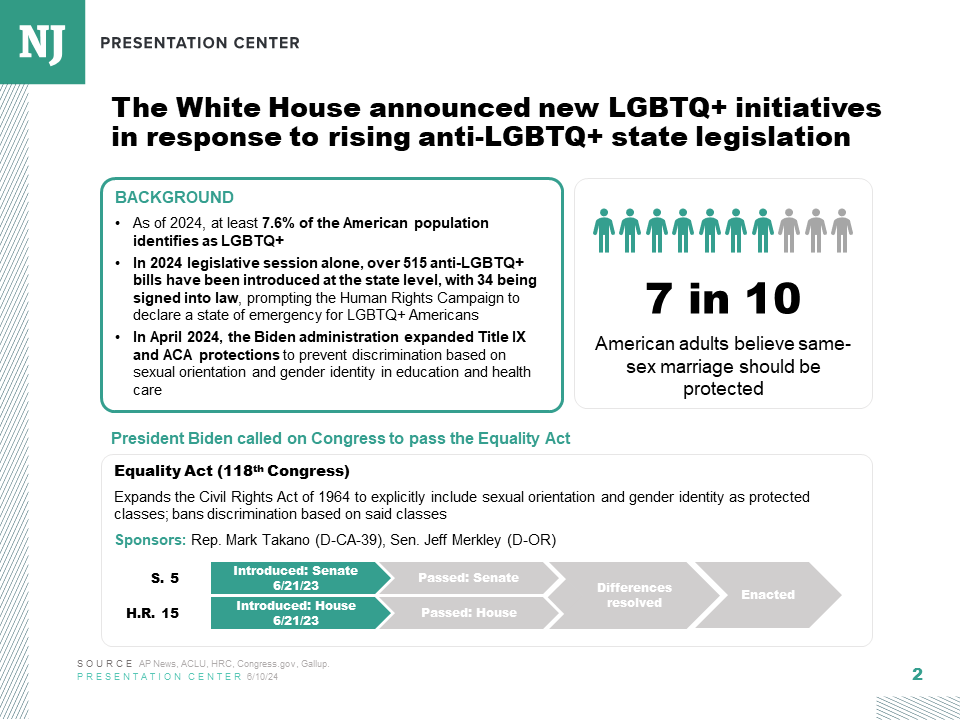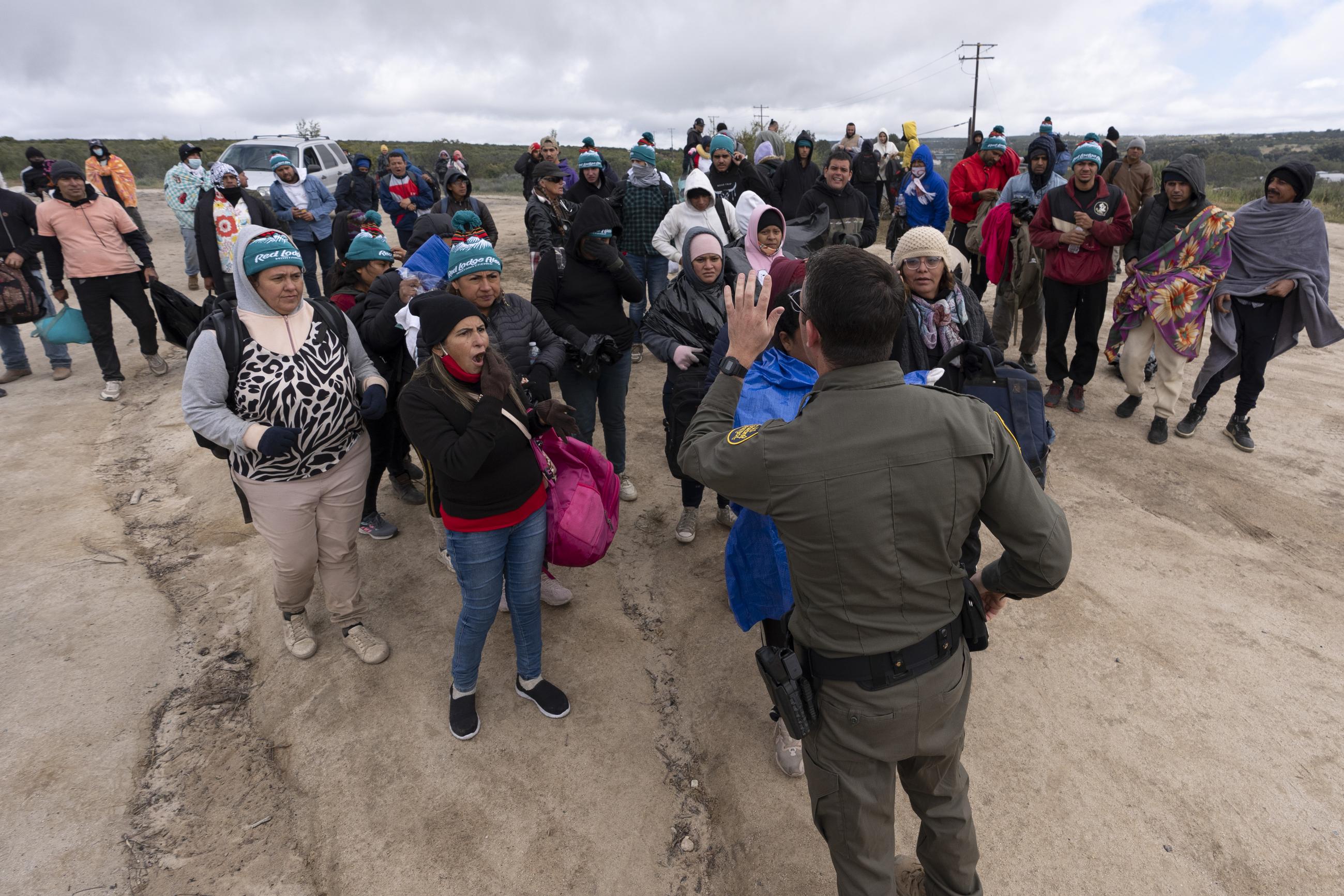Sen. Jon Husted wants Washington to take a lesson from his home state and share it with the rest of the country: Make AI available to every school child in America.
But the Ohio Republican isn’t encouraging more AI in schools just to help with the lesson plans. He argues it’s crucial to ensure the future of America’s global competitiveness.
Less than four months on the job, Ohio’s former lieutenant governor has emerged as one of Capitol Hill’s biggest champions of AI. And several actions by the Trump administration pushing schools to incorporate the evolving technology mirror what he spent years creating in the Buckeye State.
Some experts say the federal efforts may need more funding, and will require at least some consistency from the White House if they are to succeed, but Husted is convinced that stitching AI into school curricula nationwide is America’s best bet to remain a global leader.
“In the end, if you want to win, the most technologically advanced nations are also the ones that win economically and militarily,” Husted told National Journal in a sit-down interview from his new office on the Hill, which he’d moved into the day before. “But you have to have the talent.”
Husted may be new to the Senate and to D.C.—he was sworn in at the end of January to fill Vice President J.D. Vance’s vacant seat—but he is not a stranger to AI. He became well known in Ohio for enacting many first-of-their-kind initiatives as lieutenant governor.
Now, some of those ideas have become a precursor to a larger effort from the Trump administration to begin integrating the technology more into American life, beginning in K-12 classrooms.
In late April, President Trump signed an executive order aimed at improving “AI literacy and proficiency among Americans by promoting the appropriate integration of AI into education.”
The executive order creates an interagency task force to accomplish those goals, establishes an AI challenge to reward student and teacher achievements with AI, creates private-public partnerships to increase the use of the technology in the classroom, and tasks the Education Department and the National Science Foundation with approving grants for AI in education.
Last February in Ohio, Husted introduced an AI Education Toolkit that provides educators, parents, students, and policymakers with resources to increase AI readiness in schools. The state became the first to officially offer AI guidance for K-12 districts.
“If you recall, schools at the very beginning said, ‘Oh, my gosh, students are going to use this for cheating. It's going to be a terrible thing.’ And I thought, ‘No. I understand that thought process, but nobody puts technology back in the box,’” Husted said. “There's no time in history where someone said, ‘Oh, the steam engine is going to get rid of the horses, so let's do away with it.’ We always advance through technology.
“With that mindset, I said, ‘No, let's figure out how we can use it and integrate into the classroom,'” he said. “I think we were the first ones in the country to do something like that. And educators loved it. They embraced it. They were excited about it.”
Husted recently visited Tippecanoe High School in Tipp City, Ohio, which has a dedicated AI PC lab, the first of its kind in the country.
With Trump’s executive order, it likely won’t be the last public school lab of its kind.
Husted said that teachers in the state have told him that it is easier to engage with students through AI. “I attribute this from some of the things I've heard teachers say: ‘The students don't get lost. They can not be embarrassed to ask questions, and they can really engage with it.’ So it's such a powerful, helpful learning tool.”
Part of the success, Husted said, came from “leaning hard into private and public partnerships through career tech education.”
Husted highlighted relationships between schools and the private sector, including Intel, which is not only building two new factories in the state, but is also facilitating partnerships between schools and business advisory councils. The business advisory councils in Ohio not only work with teachers regarding AI implementation, but also provide grants to offer students career-exploration opportunities in AI, as well as apprenticeships.
Similarly, Trump’s executive order directs the newly created AI education task force to create private-public partnerships to develop tools to increase K-12 AI literacy, and it tasks the Labor Department with increasing participation in AI-related apprenticeships.
“We leaned hard into private and public partnerships through career tech education," Husted said. "And one of the things that we've really been successful in Ohio is advancing career tech education. I think we're at a record number of high school students doing everything from cybersecurity, [manufacturing and welding], to hospitals with health care classes, or police and fire-safety classes, robotics.”
The CHIPS and Science Act included some funding for workforce development in AI and other advanced tech fields, but the bill was passed before OpenAI released ChatGPT in November 2022, which kicked off the current generative-AI revolution.
Last year Sen. Maria Cantwell, then-chair of the Commerce, Science, and Transportation Committee, introduced the bipartisan NSF AI Education Act, which mostly focused on post-secondary education and creating more American AI experts, rather than on increasing AI literacy for the entire country. The bill made it out of committee but never received a floor vote.
Though he’s the new kid on the block, Husted doesn’t blame his AI-wary colleagues.
“There's just not a lot of general knowledge [and] as much familiarity with AI, I think, among policymakers. I think there are some that are super smart about it, and some of them have never used it, so you have a wide variety of understanding and engagement,” he said.
Sen. Elizabeth Warren, who was a professor before she served in Congress, told National Journal when asked about the executive order, “That's like asking, ‘What's your view on electricity?' It can be a valuable tool in some cases, but if not handled properly it could be pretty dangerous.”
And though there has been more movement on the issue in D.C. with Trump’s executive order, further action—including some initiatives in the executive order—may not be possible without funding.
While the executive order makes AI in education a priority, it comes as the White House is dismantling the very agencies that would be tasked with implementing it.
In March, Trump signed another executive order to shut down the Education Department “to the maximum extent appropriate and permitted by law.”
And while Trump has not yet called for the NSF to be shut down, the administration has forced the foundation to cancel more than a thousand active research grants. The White House reportedly also plans on asking Congress to slash the NSF budget by as much as two-thirds.
Last week NSF director Sethuraman Panchanathan resigned, adding to the chaos at the foundation.
At least some of the canceled grants were seemingly aligned with the priorities the White House laid out in the AI education executive, including a project by Casey Fiesler at the University of Colorado aimed at increasing AI literacy for K-12 students.
“There's a number of contradictions that are coming out of current federal guidance,” said Victor Lee, the faculty lead at the Stanford Accelerator for Learning’s initiative on AI and education.
“Ultimately we're trying to find some semblance of pathways given these contradictory actions. What we ultimately hope is that some coherence emerges, and that we are really mindful of the stakeholders and the appropriate expertise that could help chart the path.”
Husted said he was not particularly worried about the funding issues.
“In the executive order, they've said you can use existing funding streams for this purpose. And that should be sufficient for now. The president said it is a priority,” he said.
Ohio is not the only state to lean into AI in education. In October 2024, California Gov. Gavin Newsom signed a bill requiring the state to incorporate AI literacy in its curriculum and consider its role when reviewing all textbooks and teaching materials.
Also in October, the Biden Education Department released a toolkit to help K-12 schools integrate AI into the classroom, but it did not include access to potential grants from the Education Department or the NSF. The toolkit was initially called for in President Biden’s AI executive order, which Trump repealed on the first day of his second term.
Access to that toolkit has seemingly been removed by the current Education Department website.
Lee said that without more consistent funding for these priorities, it may be up to the states to try and step up and fill the gap. While it may be possible for California or Ohio to step in for the federal government, states with fewer resources or motivation all fall behind, he said.
“It disadvantages everybody, because seeing how things work in communities in Arkansas is actually really insightful for a number of the communities in California, and vice versa,” Lee said. “And sometimes you need a critical mass to be able to get certain types of work done or answer certain questions about what works under what conditions. It’s, I think, always been to the benefit of the country that we've had federal investment.”
Husted led other AI initiatives in Ohio—including some that have inspired him to introduce bills in Congress, such as one to use AI to cleanse regulatory code of outdated or redundant content.
And it’s little surprise that several of the AI initiatives helmed in Ohio seem to be the pillars for the executive action from the White House: Vance was on Husted’s advisory board for the InnovateOhio initiative. Other Trump allies served on the board, Husted noted, including Sen. Bernie Moreno and Vivek Ramaswamy, who is running to be governor.
“Everybody needs to engage on these issues with the goal of helping America have economic and military secure superiority in an era where our major global competitor, China, is going all in,” Husted said.

